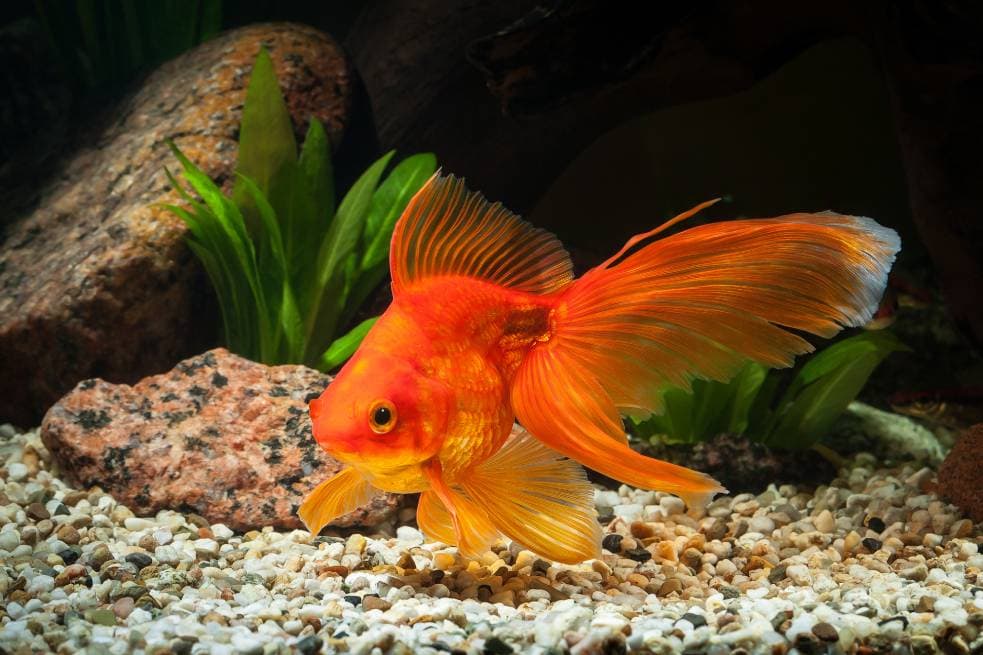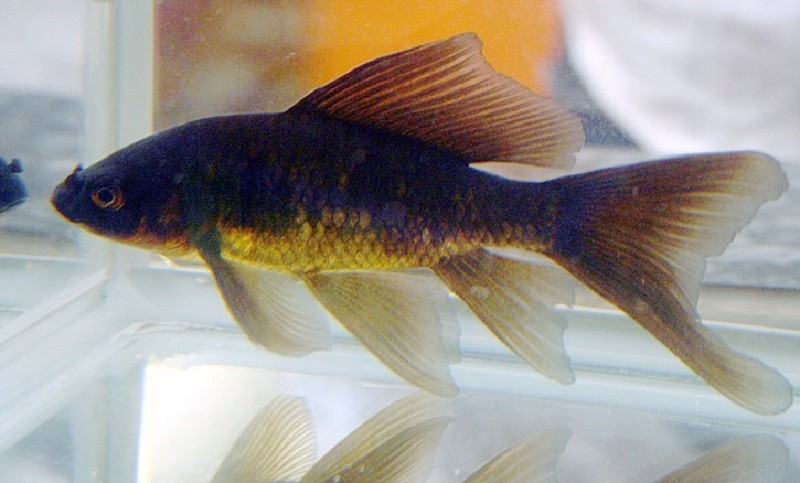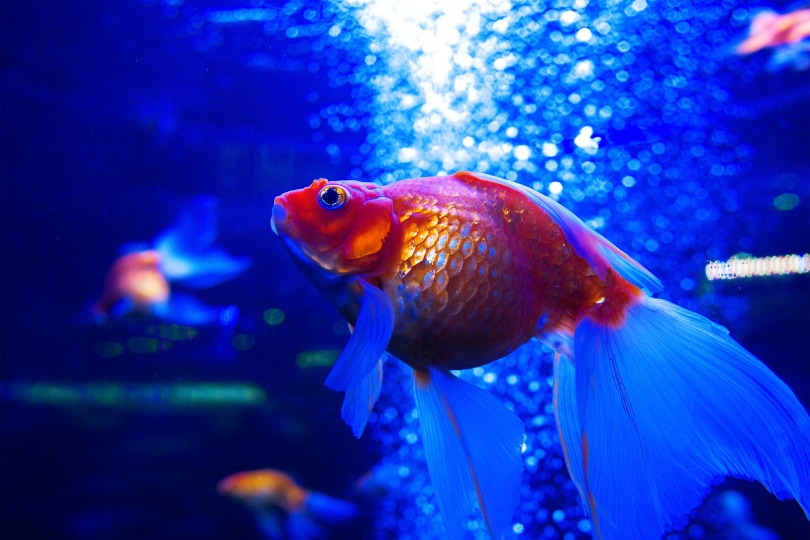
Goldfish are among the most popular pet fish available for purchase these days. They’ve come a long way from their early days, where only royal dynasties in China could keep them. Today, goldfish are available for all and are considered a beloved pet by millions. So, stunted growth in goldfish is sure to raise concerns among pet owners.
Goldfish can get between 4.75 and 12 inches long, depending on the variety and living conditions. A fish that hasn’t reached its genetic size is not a healthy one. Bear in mind that the variety matters. Fancy goldfish, such as Orandas, will not get as long as typical single-finned fish.
The 6 Potential Reasons Your Goldfish’s Growth Is Stunted
1. Genetics
Genetics determines how large your goldfish will get. That in turn, depends on several other factors. The goldfish’s DNA decides their potential for growth, with other things driving whether stunting will happen and to what degree.
2. Living Conditions
Optimal living conditions are imperative to any pet’s health. That’s what makes your tank’s setup so vital. First, consider the size of your aquarium. It’s a widespread myth that you should plan on 1 inch of fish per gallon. From a logical perspective, that’s too simplistic. It doesn’t take into account the social behavior of fish, their activity level, adult size, their height, width, or physiology.
Goldfish consume a large amount of oxygen and produce a great deal of waste. Erring on the safer side with a larger tank is probably the better choice. Think of it this way: If you give your fish the space that they need with adequate filtration, you’ll have less maintenance to do. It’s a win-win.
It’s unfortunate that many pet stores and other organizations promoted the idea of keeping goldfish in bowls. Remember that they are pond dwellers in the wild. People have come around to the fact that these confined spaces are cruel, with some countries banning them outright. A tank that is too small for a goldfish will undoubtedly affect its growth.

3. Poor Water Quality
Goldfish have high oxygen needs. There are two main ways in which oxygen gets into your tank: either from the surface area at the top with agitation or live plants. Unfortunately, goldfish don’t play nice with the latter, limiting your options. Adding an airstone or bubbler can improve the water quality immensely by boosting the concentration of dissolved oxygen.
If your goldfish is to grow to its genetic potential, there must be between 5-6 ppm dissolved oxygen in their tank. Less will stress your fish and lead to stunted growth. A goldfish living in poor conditions will divert its nutritional sources to staying alive instead of getting bigger. The same principle applies to any organism, including people.
If you are looking for help to get the water quality just right for your goldfish family in their aquarium, or just want to learn more about goldfish water quality (and more!), we recommend you check out the best-selling book, The Truth About Goldfish, on Amazon today. It covers everything from water conditioners to tank maintenance, and it also gives you full, hard copy access to their essential fishkeeping medicine cabinet!
The Nitrogen Cycle
Even with a filter, you’ll still need to do regular water changes of about 20% per month. Fish waste converts to ammonia, which is toxic at high levels. Beneficial bacteria will break it down into nitrites and nitrates. Nitrites are harmful at high levels. Nitrates typically end up as plant food, but having plants in the tank is not always an option with goldfish.
Unfortunately, a build-up of nitrates can stunt growth. That’s where the water changes come into play. They can help reduce the concentration to create a healthier environment for your goldfish. We recommend testing your water for ammonia, nitrites, and nitrates every week to make sure the conditions are appropriate.
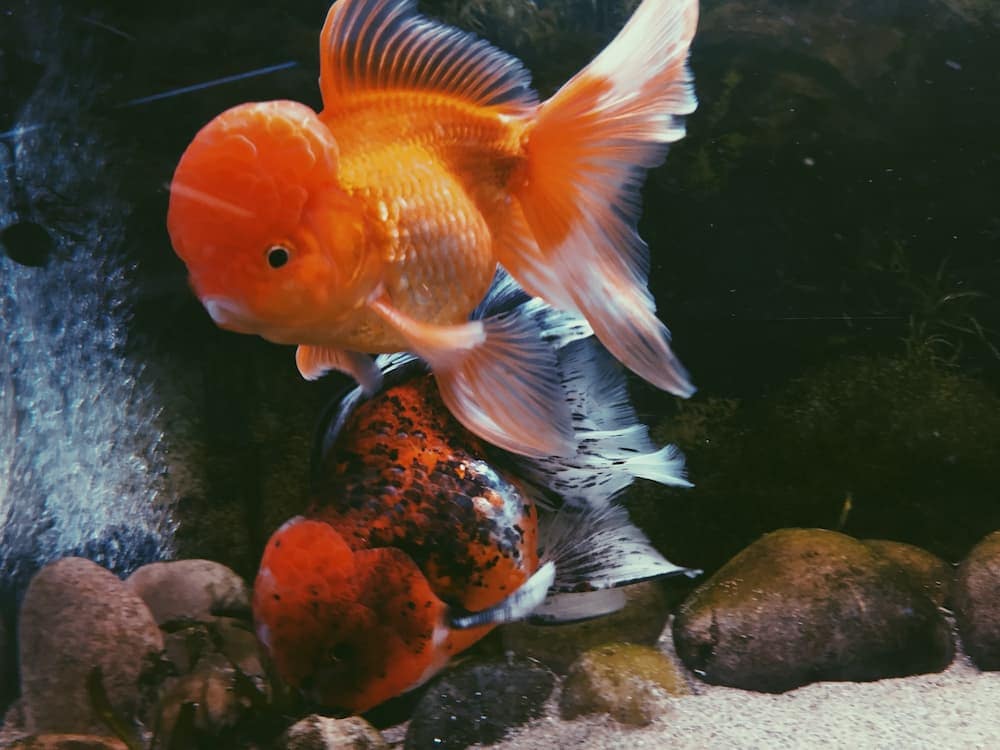
4. Nutritional Deficiencies
Goldfish aren’t much different from other organisms. They need the right nutrients in the correct amounts to grow properly. Stunted growth is a sign of many deficiencies. Feeding your fish a commercial diet supplemented with protein sources will help ensure that it’s getting what it needs to grow. For successful rearing of goldfish, you will need to provide about 40% protein and 4.0 kcal/g energy.
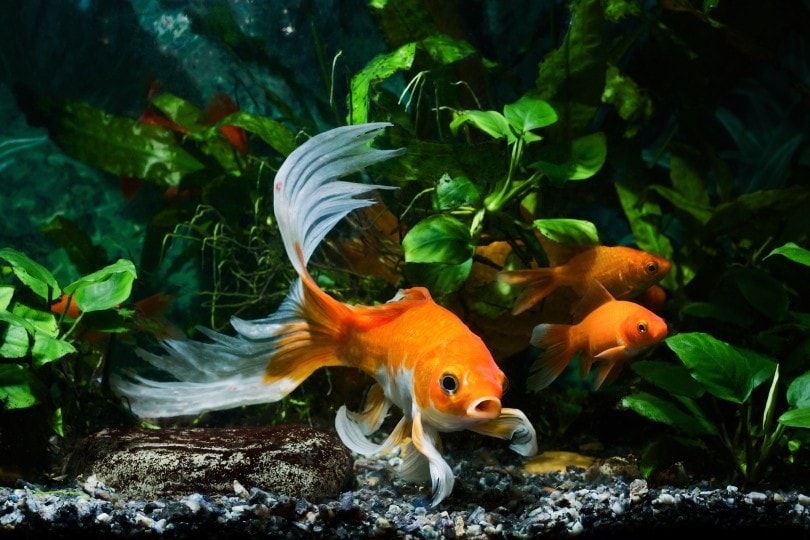
5. Size Incompatibility
Goldfish can produce growth-inhibitory hormones, such as somatostatin. In nature, these hormones are used to reduce competition by suppressing the growth of other fish. In a tank situation, this means that a larger goldfish can suppress the growth of smaller tank mates if they are housed in a cramped environment and if they don’t receive enough water changes to keep the water quality acceptable.
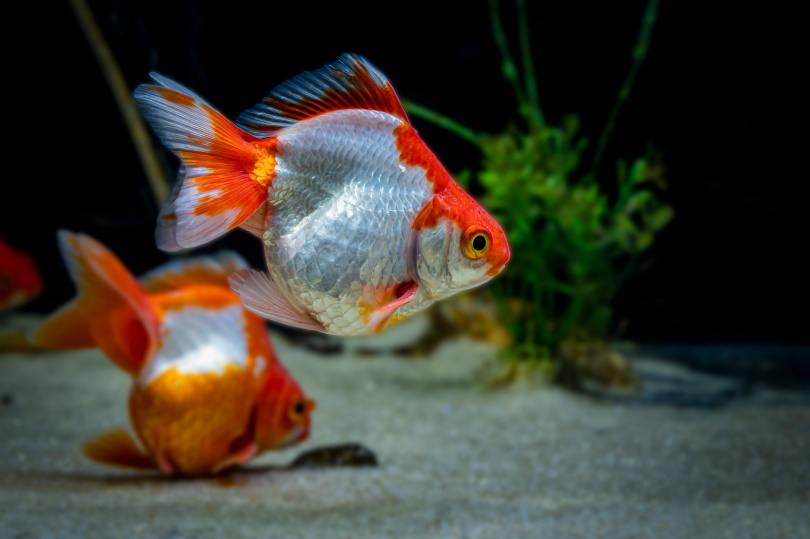
6. Stress
Stress can weaken a goldfish’s immune system and isn’t conducive to overall health. Generally speaking, the term is used to describe a sign of illness. However, stress can also occur from issues that aren’t diseases. For example, goldfish are social animals, and some countries have passed laws that prohibit people from housing them alone (except when advised by a veterinarian). Keeping a goldfish alone may stress them and lead to issues down the road, including inappropriate behavior and inadequate levels of growth. Stress is also common in tanks that are too small for fish. In such environments, the initial signs of stress are “glass surfing”, where fish seem to continuously swim up and down against the walls of an aquarium for no apparent reason.

 Treatment Options
Treatment Options
Goldfish reach their mature size at about 2 years. In a strict sense, though, goldfish are cold-blooded animals and never truly stop growing. If they seem on the small side for their age, it’s time to take action. Water conditions are easy to check and are an excellent place to start. You may find that you have to tweak your maintenance schedule to home in on the ideal conditions. The key is consistency. Remember that you are recreating the fish’s native habitat. It should stay reasonably stable. Parameters such as pH and temperature should also be conducive to their optimal growth. Their optimum temperature is between 20 °C (68 °F) and 22 °C (72 °F), and their optimum pH is 7.0.
It’s essential to give your goldfish food formulated for this species. The dietary needs of aquatic organisms vary with the types of foodstuffs that they eat. Goldfish are omnivores that will consume both plants and meat. A commercial product will reflect these nutritional needs.
Excess food going to the bottom will wreak havoc on the tank’s water quality. It’ll also add to your maintenance and costs. Giving your goldfish more food isn’t a solution to stunted growth. It’s far better to provide it with the correct amount of a nutrient-dense food that reduces the risks of deficiencies that could impact growth.
Issues involving stress and tank size are easily fixed with the correct tank size and appropriately-sized tank mates to interact with. Goldfish should also be offered enrichment in the form of ornaments, plants, and decor in their aquarium.
Summary
We all want our pets to stay healthy and have a good quality of life. After all, they bring us so much joy. Stunted growth in your goldfish is a red flag that you shouldn’t ignore. Not only will it affect your fish’s size, but it can also cause other health issues that can shorten their lifespan. While you can’t control all the growth factors, you can provide an environment that is ideal for your fish.
You might also be interested in:
- Common Goldfish: Care Guide, Varieties, Lifespan & More (with Pictures)
- Feeding Goldfish Fry: Complete Care Guide With Schedule
Featured Image Credit: Pixabay




